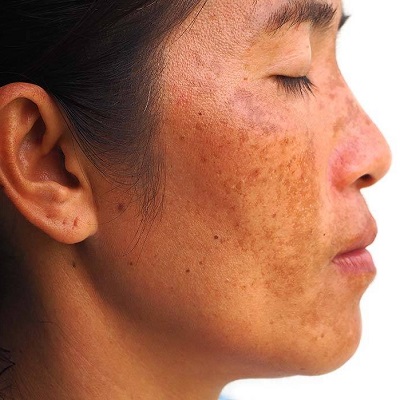Melasma can feel like a stubborn mystery—one day your skin looks clear, and the next, dark patches appear across your cheeks, forehead, or upper lip. If you've been battling uneven skin tone that doesn’t seem to budge no matter how many creams you try, you're not alone. Fortunately, today’s advanced melasma treatments offer hope for brighter, clearer skin. Let’s explore everything you need to know about Melasma Treatment Dubai, from causes to treatment options and aftercare.
Understanding What Melasma Really Is
Melasma is a common skin condition that causes symmetrical patches of brown or gray-brown discoloration, typically on sun-exposed areas of the face. It is often triggered by hormonal changes, sun exposure, and even certain skincare products. Though it affects both men and women, it is far more common in women, especially during pregnancy or while using hormonal contraceptives.
Unlike regular hyperpigmentation, melasma tends to go deeper into the skin, making it more resistant to over-the-counter products. That's why professional treatments are often the most effective path forward.
What Causes Melasma to Appear
While the exact cause is complex and multifactorial, there are a few known triggers that play a major role:
Excessive sun exposure without protection
Hormonal fluctuations due to pregnancy or birth control
Genetics and family history
Certain medications or skincare products that irritate the skin
Understanding the trigger behind your melasma is crucial. It not only helps in tailoring the right treatment plan but also prevents the condition from worsening.
Exploring Your Melasma Treatment Options
Modern dermatology offers a variety of treatment options, each targeting different layers of pigmentation. Choosing the right one depends on the depth, severity, and underlying cause of the melasma.
Topical Treatments
Many initial treatments begin with prescription-strength topical creams that combine ingredients like hydroquinone, tretinoin, and corticosteroids. These work to gradually lighten pigmented areas by slowing down melanin production and encouraging skin turnover. Gentle brightening agents like kojic acid and azelaic acid may also be recommended.
Chemical Peels
Chemical peels use a solution to exfoliate the top layers of skin, allowing new, evenly toned skin to emerge. For melasma, light to medium peels containing glycolic acid or salicylic acid can be effective. However, they must be administered with caution, as overly aggressive treatments can worsen pigmentation.
Laser and Light Therapies
For more stubborn cases, laser treatments may be considered. These use targeted light energy to break down pigment deposits within the skin. Fractional lasers and intense pulsed light (IPL) therapies are often used, but they require careful selection to avoid post-inflammatory hyperpigmentation. Not all lasers are suitable for melasma, especially for deeper skin tones.
Microneedling with Serums
Microneedling can improve skin texture and tone by creating controlled micro-injuries that trigger the skin's healing response. When paired with brightening serums, it can enhance the penetration of active ingredients and improve overall pigmentation.
Combination Treatments
In many cases, a multi-step approach works best. Combining topical creams with peels or microneedling often yields better and longer-lasting results. The key is a personalized treatment plan that adapts over time based on your skin's response.
The Benefits of Professional Melasma Treatment
Choosing a medically guided treatment over store-bought products has several advantages:
Targets the root cause of pigmentation
Offers faster and more noticeable improvement
Minimizes the risk of side effects with expert supervision
Provides access to advanced technologies and formulations
Helps maintain long-term skin health and radiance
With professional care, patients often notice a reduction in pigmentation, improved skin tone, and a more youthful glow after completing a series of sessions.
What to Expect During and After Treatment
During treatment, you may feel mild tingling or warmth, depending on the procedure. Most sessions are quick, minimally invasive, and require little to no downtime. Some redness or peeling may occur temporarily, especially with chemical peels or microneedling.
Post-treatment care is critical in managing melasma. Sun protection is non-negotiable. Applying a broad-spectrum sunscreen with SPF 50 daily and wearing protective hats or clothing can make a huge difference. A gentle skincare routine that avoids irritants is also essential to prevent flare-ups.
Hydration and patience are just as important as the treatment itself. Melasma doesn’t disappear overnight. It’s a condition that responds best to consistent care, a well-monitored treatment plan, and realistic expectations.
How to Maintain Results and Prevent Recurrence
Even after successful treatment, Melasma Treatment in Dubai can return without proper maintenance. To keep your skin even-toned and radiant:
Use sunscreen every single day, even on cloudy days
Continue with gentle brightening creams as recommended
Avoid excessive heat and direct sun exposure
Stick to a skincare routine designed for sensitive or pigment-prone skin
Schedule maintenance treatments if necessary
Managing melasma is a journey, not a one-time fix. But with the right approach, it’s entirely possible to maintain clearer, more radiant skin long term.
Conclusion
Melasma may be persistent, but it’s far from untreatable. By understanding the condition, exploring the most effective treatment options, and committing to protective aftercare, you can take control of your skin’s health and confidence. A consistent routine, professional guidance, and smart sun habits are the winning trio in the fight against melasma. Clearer skin starts with knowledge—and now that you’ve got the essential insights, you’re already one step closer to your glow.





Comments